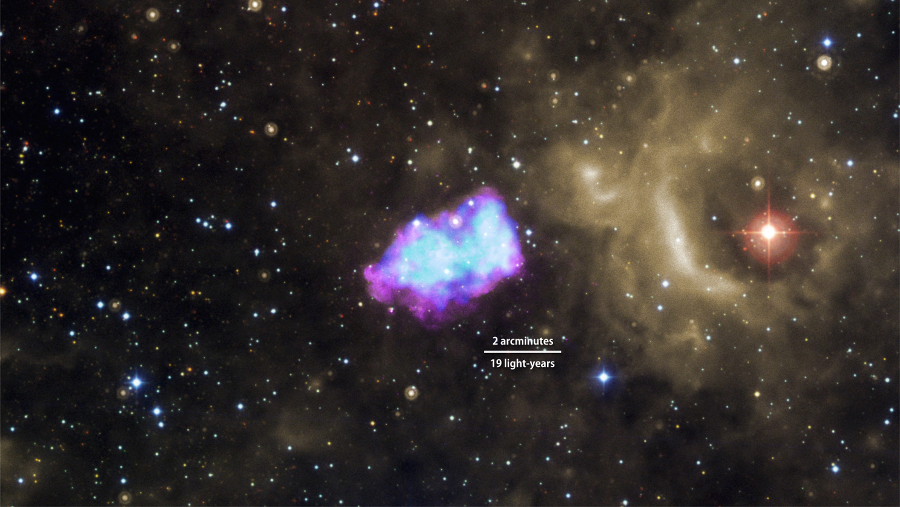
 Credit: NASA/Suzaku and NASA/CXC, DSS, and NASA/JPL-Caltech
Credit: NASA/Suzaku and NASA/CXC, DSS, and NASA/JPL-Caltech
Single Degenerate
Gaining weight can be hazardous for your health. This is especially true for white dwarf stars, the burned-out cinders left behind after the cores of lower-mass stars run out of nuclear fuel. Gravity pushes on these cores, making them smaller and smaller, until at some point an incredible density is reached, and a strange physical mechanism halts the compression. White dwarfs are supported by electron degeneracy pressure, generated when electrons are squeezd to extremely high density. But this electron-degeneracy pressure has a limit: it can only support an object if its mass is below the Chandrasekhar mass, about 1.4 times the mass of the sun. If a white dwarf gains more mass, it will collapse, raising the temperature and pressure of its interior and causing the white dwarf to explode in a titanic deflagration observed as a so-called "Type Ia" supernova. So gaining mass can be deadly for a white dwarf. A white dwarf can gain mass, and be pushed over the Chandrasekar mass limit, by accreting gas from a normal companion star in a binary system; another way is if the white dwarf is orbited by another white dwarf, since eventually the orbit will decay and the two stars merge. Since Type Ia supernovae are useful as astronomical "standard candles", and have provided evidence of the acceleration of the Universe due to dark energy, astronomers have debated whether the accretion or merger mechanism is more important. In a new study of a supernova remnant called 3C 397, produced by a Type Ia explosion, astronomers believe they have strong evidence of a white dwarf explosion produced by mass accretion. In the accretion scenario the central density of the accreting white dwarf is higher than in the merger scenario, and because of this higher density, higher proportions of heavy atoms like nickel and manganese can be built up by accreting free neutrons. The image above shows an X-ray image from the Chandra X-ray observatory in purple, and an X-ray image from the Suzaku X-ray observatory in blue, superimposed on an optical image. Using the X-ray data from Suzaku and Chandra, astronomers have measured the proportion of these elements in the hot gas in 3C397, and found that these elements were indeed enhanced. This is a strong indication that the explosion that produced 3C397 was due to the accretion scenario.
Published: April 13, 2015
<
HEA Dictionary ● Archive
● Search HEAPOW
● Other Languages
● HEAPOW on Facebook
● Download all Images
● Education ● HEAD
>

Each week the HEASARC
brings you new, exciting and beautiful images from X-ray and Gamma ray
astronomy. Check back each week and be sure to check out the HEAPOW archive!
Page Author: Dr. Michael F. Corcoran
Last modified Monday, 26-Feb-2024 17:44:31 EST


